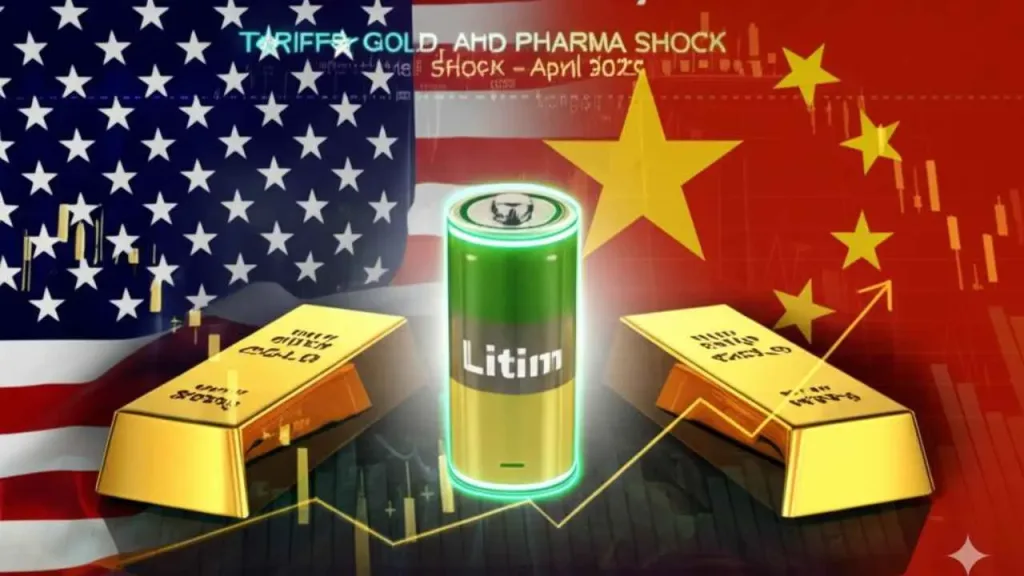U.S.-China Tariffs Soar, India Feels the Ripple
📌 U.S.-China Trade War Escalates to Historic Tariff Levels
The trade dispute between the world’s two largest economies has intensified, with the United States imposing import tariffs as high as 245% on select Chinese goods. In retaliation, China has levied duties up to 151% on American imports.
Just weeks ago, tariff levels were hovering around 2.5% to 10%. By April 2, they surged to 54%, and within days, hit 145%, targeting sectors such as steel, batteries, and apparel. China quickly responded, targeting U.S. airline deliveries and strategic imports.
Key Items Affected:
- Lithium-ion batteries – 175%
- Squid vans – 70%
- Wool sweaters – 116%
- Steel products – 145%
🏛️ White House: “China Must Come to the Table”
Washington has made its position clear: China must initiate negotiations. A senior White House official stated that the U.S. will not chase a deal and expects China to approach “with a cooperative mindset.”
China, meanwhile, has expressed conditional openness to dialogue, demanding:
- Stable and consistent trade policies
- Respectful diplomatic engagement
- A designated lead negotiator from the U.S.
- Recognition of China’s geopolitical priorities
🔋 Rare Earth Minerals & Section 232: The Next Frontline
In response to growing dependence on imported critical minerals, President Trump has invoked Section 232, highlighting the national security risk of relying on foreign sources — especially China — for rare earth elements.
Beijing, in turn, has threatened export restrictions, prompting Washington to explore alternative sources like Greenland, which is rich in rare earths and critical metals essential for:
- Electric vehicles (EVs)
- Defense manufacturing
- High-tech electronics
💰 Gold Prices Soar Past $3,300 as Investors Seek Safe Haven
Gold has become a focal point for global investors. With macroeconomic uncertainty rising, prices have surged past $3,300/oz, driven by:
- U.S.-China trade tensions
- Fears of global recession
- Central bank gold buying
- Weakening equity markets
“Gold is benefiting from safe-haven flows and policy uncertainty,” said a senior market strategist. “Investors are hedging against prolonged volatility.”

💊 India Bans 35 Drug Combinations Over Safety Issues
In a bold regulatory move, India’s drug regulator CDSCO has banned 35 fixed-dose combination (FDC) drugs, citing safety concerns and improper approvals.
These combinations, often used in pain relief, diabetes, and supplements, were reportedly cleared by state licensing bodies without central approval. Manufacturers are pushing back, highlighting inconsistencies in enforcement between state and national authorities.
Why it matters:
The ban could lead to greater scrutiny in India’s pharmaceutical sector and encourage stronger central oversight of drug approvals.
🔻 India’s Trade Deficit with China Hits $99.2 Billion
India’s trade imbalance with China has widened significantly, nearing a record $100 billion deficit. Imports in March alone rose 25%, driven by:
- Electronics
- Electric batteries
- Consumer durables
- Solar cells
FY25 Snapshot:
- India’s imports from China: $113.5 billion
- India’s exports to China: $14.3 billion
- March imports alone: $9.7 billion
The rising dependency — especially in electronics and pharmaceuticals — has sparked concerns over India’s supply chain resilience.
📊 Corporate Earnings: Wipro, Angel One & RVNL in the Spotlight
🖥️ Wipro
Wipro posted a 25.9% jump in net profit, driven by improved operational efficiency and major deal wins. However, it warned of muted demand and forecasted a 1.5–3.5% decline in IT services revenue.
📉 Angel One
Angel One saw a 22.1% dip in revenue and a sharp 48.7% fall in profits, alongside a 4% decline in new client additions. The firm also lost market share in the F&O retail segment, although its cash market share expanded.
🚆 Rail Vikas Nigam (RVNL)
RVNL reported strong margins (22.7%) and secured solar project orders totaling 3.2 GW. With robust execution and a healthy bidding pipeline, RVNL remains a key player in India’s renewable infrastructure growth.
🚌 Govt to Launch Tender for 10,000 Electric Buses
In a major push toward clean mobility, the Indian government will soon release a tender for 10,000 electric buses under the PM e-Bus Sewa scheme. Companies like Tata Motors and Olectra GreenTech are likely contenders.
The plan is supported by new subsidies and initiatives from the Ministry of Heavy Industries, which recently greenlit 3,500 electric buses under a separate program.
Why it’s important:
This initiative aligns with India’s net-zero targets and is expected to accelerate EV adoption in public transportation.
🧠 Conclusion: Markets in Flux, Policy Uncertainty Rising
From historic tariff hikes to surging gold prices and regulatory clampdowns in pharma, the economic landscape is undergoing rapid transformation. The U.S.-China trade war, India’s import vulnerabilities, and the push for clean energy are interlinked themes shaping the future of trade and investment.
For businesses, investors, and policymakers alike, adaptability and foresight will be critical in navigating the complex months ahead.
📢 Want more financial insights?
Stay tuned for exclusive updates on global markets, Indian economic trends, and expert stock analysis. Like, share, and subscribe for real-time coverage.
